The Shape Up development methodology is a tried-and-true approach to software development that emphasizes cycles of focused work and reflection. But can Shape Up work for your WordPress Team?
If your team is struggling to complete purposeful, high impact projects, while juggling day-to-day tasks and maintenance, Shape Up is a proven option to explore.
In a recent conversation between myself and Jason Coleman, we broke down the basics of Shape Up as introduced by Ryan Singer and the team at Basecamp.
Our interview and this article then explore how used an adapted version of Shape Up in our WordPress product teams over the past 3 years.
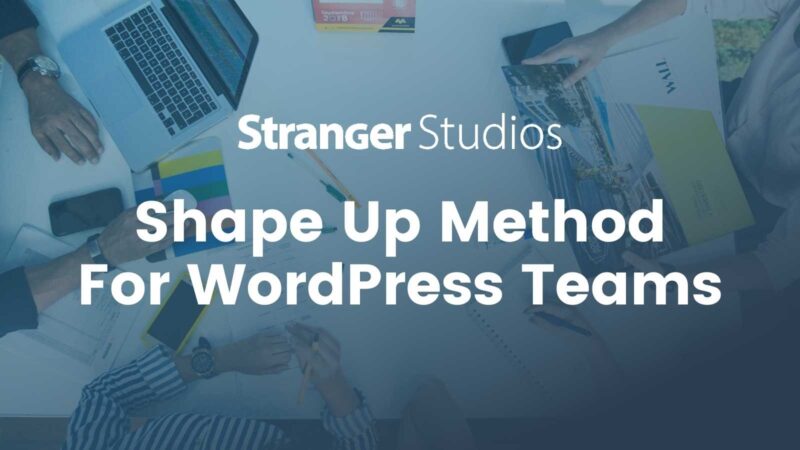
Video Interview: Adapting Shape Up for WordPress Teams
Understanding Shape Up: The Original
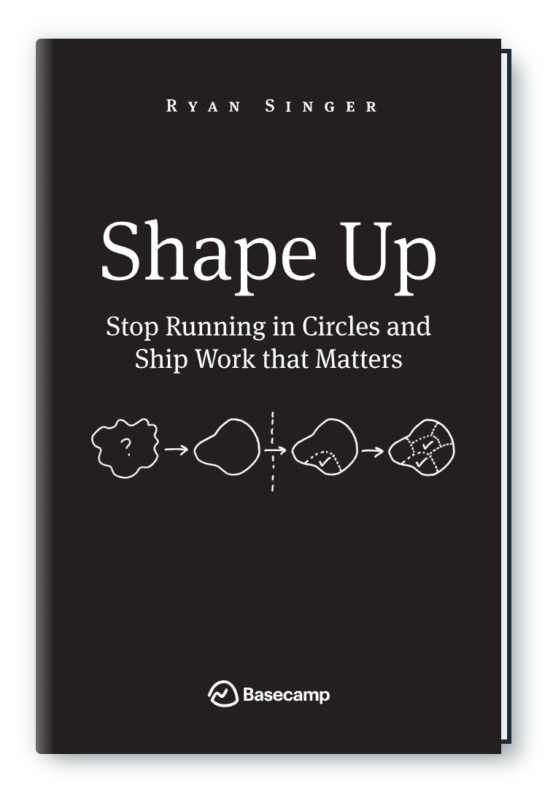
What is Shape Up?
“Shape Up” is a development methodology introduced by Basecamp, the company behind the popular project management tool of the same name. The methodology is described in a book titled Shape Up: Stop Running in Circles and Ship Work that Matters written by Ryan Singer, one of Basecamp’s product strategists.
The “Shape Up” methodology is Basecamp’s response to challenges they faced with traditional agile and waterfall development methods. It introduces a number of unique principles and practices aimed at helping teams build better products in more focused cycles.
Key Concepts of Shape Up
- Six-Week Cycles: Work is done in six-week chunks called cycles. Following the cycle is a two-week cooldown period. During cooldown, teams can focus on smaller tasks, bugs, or take a break.
- Shaping: Before a cycle starts, senior team members shape the work. They define the rough outlines of a solution but don’t go too deep into detailed specs. This is delivered as a “Pitch” at the “Betting Table”.
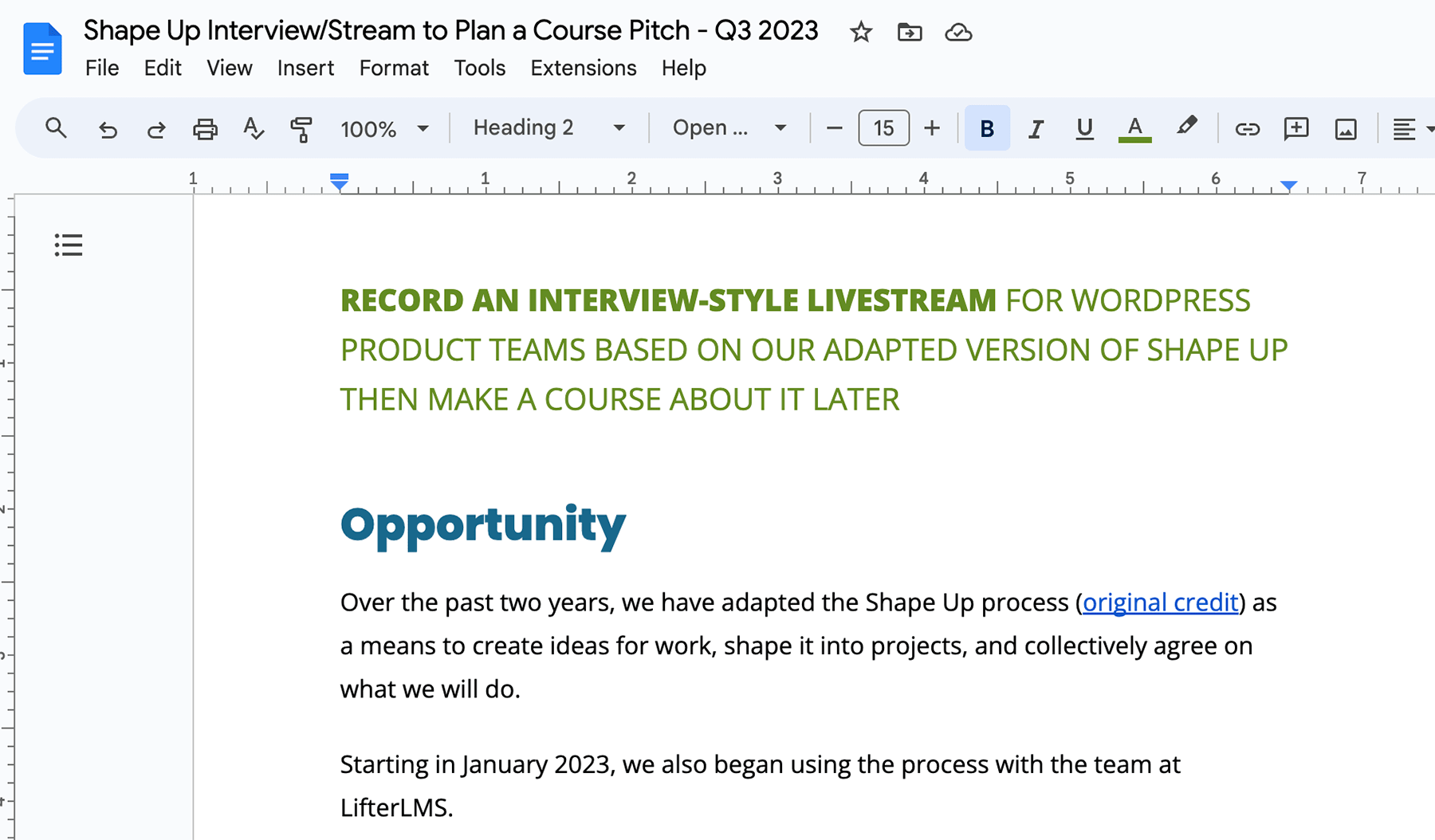
- Bets: Instead of committing to a roadmap of features, the team makes bets on which projects to tackle next. This means they’re betting their time on projects they believe will have the most impact.
- No Backlogs: Unlike many other methodologies, there’s no perpetual backlog in Shape Up. If something is deemed important, it will be shaped and bet on in a future cycle.
- Hill Charts: A unique way to represent the progress of a task. Tasks start on the left side of the hill (the unknown) and move right as things become clearer.
- Circuit Breakers: These are mechanisms to ensure that projects don’t drag on indefinitely. For instance, if a project isn’t showing promising results within the first few weeks, it might be terminated early.
- Fixed Time, Variable Scope: Instead of trying to cram all the work into the given timeframe, adjust the scope. This way, teams ensure they deliver something meaningful at the end of the cycle, even if it’s not everything that was originally envisioned.
- Appetite: Before shaping the work, the team decides how much time they want to spend on a particular project. Setting the appetite helps constrain the solution and prevents over-engineering.
- Rituals: There are specific rituals in the Shape Up process, such as the kick-off at the beginning of each cycle where the teams learn about the projects they’re going to work on.
- Teams of Three: For many projects, a designer, a programmer, and a tester form a small cross-functional team of three. This ensures a diverse skill set while still keeping the team lean and nimble.
Shape Up emphasizes deep work, meaningful results, and a sustainable development pace.
While it may not fit every company’s needs or culture, many organizations have found value in adopting or adapting some of its principles. I recommend diving deeper by reading the “Shape Up” book, which is free to read on Basecamp’s website.
Read Shape Up online for free here.
How We Adapted Shape Up For WordPress Teams
At its core, Shape Up promotes focused work cycles and intentional breaks.
As our team grew, we struggled to find a system that balanced our team’s time on maintenance and bug scrubs, alongside big picture projects that drove new product features or extensions.
Then Jason found Shape Up. We had a few key team members read and internalize the core Shape Up process over a few weeks of book club-style learning and sharing. Then we tried it.
Now 12 cycles into using Shape Up, we’re confident that the core model plus the following adaptations are worth a shot if your team was suffering similar issues as ours: a desire to ship meaningful, high impact work without burning out.
Here’s a breakdown of how we’ve adapted Shape Up for WordPress teams:
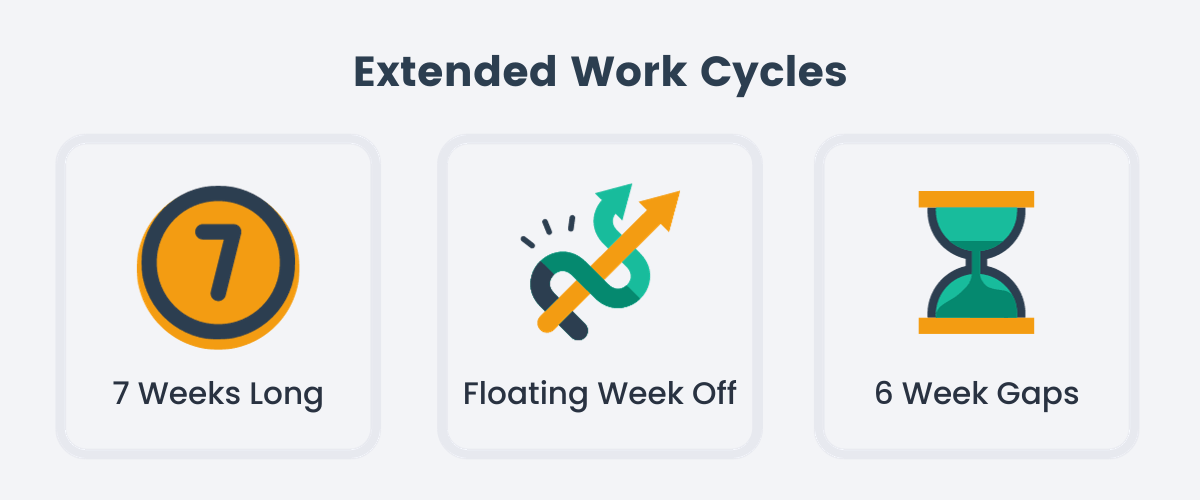
Extended Work Cycles
- Duration: While Shape Up recommends 6-week cycles, we extended ours to 7 weeks.
- Flexibility: To accommodate holidays and other commitments for our remote team, we integrated a floating week off for each person during the cycle.
- Longer Intervals Between Cycles: Basecamp’s rhythm is a constant flow of pitching, reviewing, and betting—almost perpetually. For us, the same people doing Shape Up work wear multiple hats, from pitching ideas to executing them. This dual responsibility meant we needed a longer buffer. We extended our “off cycle” to 6 weeks (instead of the usual 2).
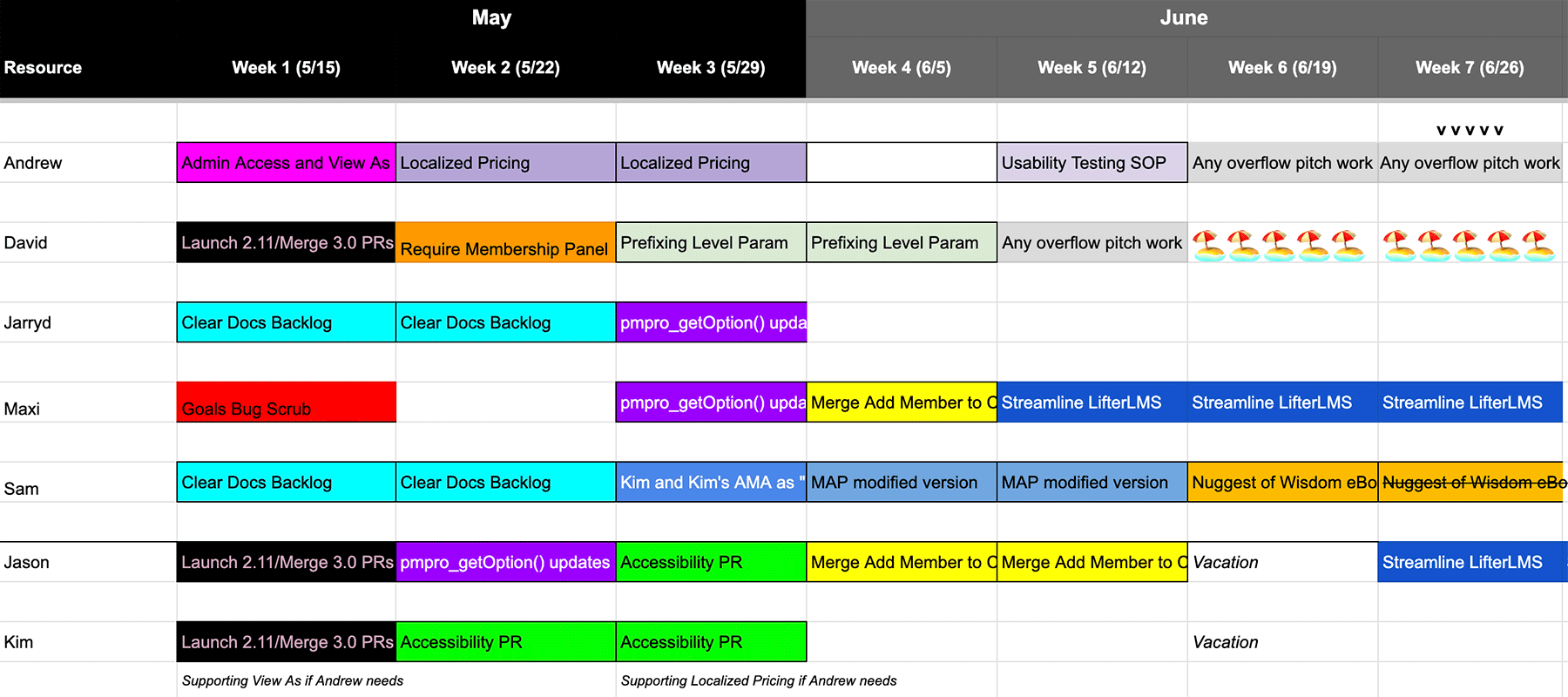
A More Cautious Shipping Approach
Shape Up has an agile mantra: if something has bugs post-release, simply revert.
This approach doesn’t translate to an open-source software project like Paid Memberships Pro or LifterLMS. When using Shape Up for WordPress teams, you need to do things a little differently.
Once our code is out in the wild, there’s no taking it back. It is super important that we do thorough code reviews before any release.
Our extended off-cycle time enables this review period.
Additionally, we now build phases like “launch project X” into the actual cycle period. While this isn’t necessarily ‘new work’, it does also benefit from intentional time placed on the Work Cycles spreadsheet (schedule).
The Introduction of the “Ideas Meeting”
Before diving into pitch writing, we hold a meeting dedicated to discussing and evaluating any and all ideas. It’s a filter, ensuring we invest our energies only in concepts with potential.
There are two main benefits of the addition of an Ideas Meeting:
- Efficiency: Given our team’s size, drafting a pitch could be a large investment of time and resources. The Ideas Meeting helps us sidestep pitches that might not see the light of day.
- Guidance: People from different teams and with varying degrees of experience with the company attend the meeting. This brainstorming session aides newer members in understanding the company’s priorities and refining their pitches, while bringing fresh perspectives to the people who’ve been here the longest.
The way we adapted Shape Up for WordPress teams helps the system fit into our work culture. The core method gave us a much needed structure, and the adaptations lead to more flexibility and creativity—key drivers of why Shape Up has been such a success.
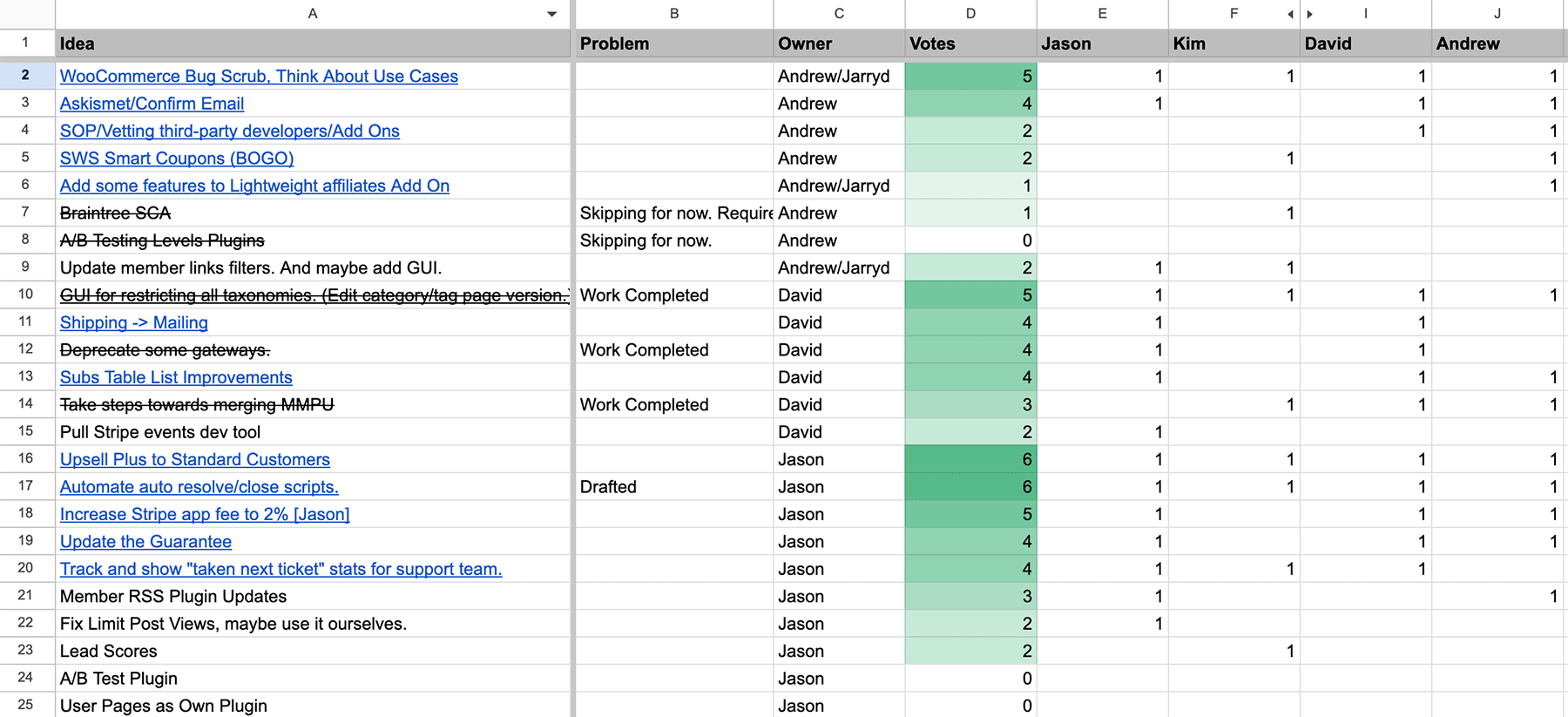
Post Mortems in the Shape Up Process
Our Post Mortems serve as a conclusion to specific cycle work projects, since we rarely launch projects within the cycle itself.
We needed a way to leave the completed work documented for our future selves: to understand what was left undone, and decide on the next steps.
Key Points of Our Post-Mortem Process
- Summarizing Completed Work: We start by outlining what was accomplished during the cycle, reiterating the major tasks completed based on what was initially proposed in the pitch.
- Identifying Unfinished Tasks: We provide clarity on what’s unfinished by listing out any significant tasks we thought we would finish but couldn’t.
- Deciding on Next Steps: We make a clear plan for the future, deciding if the project needs a few more days of work, if it needs a new pitch, or if we realized the project is larger than anticipated and needs to be reevaluated.
This process serves as a conclusion to a project in cycle. Post Mortems signal that it’s ok to put the pencils down and shift focus to the next cycle project or to take a much needed break.
The Post Mortem addresses a person’s internal struggle with leaving tasks incomplete by providing a sense of closure. A way to file away unfinished business for later review.
By adopting this practice, we’ve seen improvements in both restarting projects as well as team morale. The structure helps to clear away lingering thoughts about unfinished work and ensures that we are always moving forward.
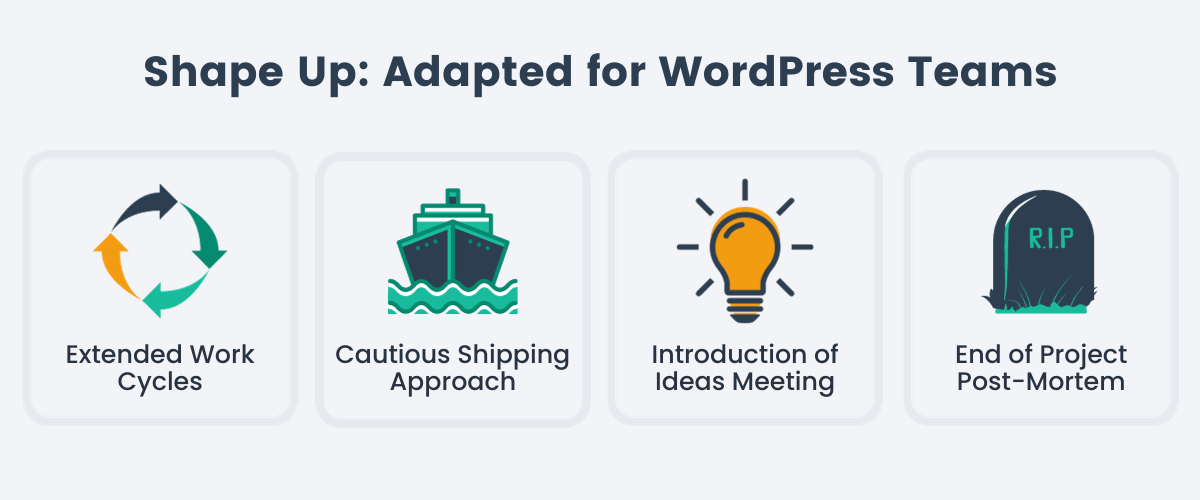
Custom Templates: Shape Up for WordPress Teams
We put together a Google Drive folder with a few key templates we use for this adapted Shape Up method. Follow the link below to duplicate this folder for your own workspace.
The folder includes templates for:
- Ideas Sheet: A Google Sheet for tracking the ideas you will pitch, the pitch owner, and teamwide voting to help the writer understand how meaningful or popular the idea is.
- Pitch Template: A Google Doc template for writing a pitch.
- Work Cycle Calendar: A Google Sheet for quarterly work cycle scheduling across all participating team members.
- Post Mortem Template: A Google Doc template for writing a Post Mortem.
The Basics Always Apply: Product Teams, Agencies, Freelancers, and Solopreneurs
This methodology works for more than just software development. Early in 2023, we introduced this adapted methodology to the team at LifterLMS. For both product development and sales/marketing, the results were transformative.
Their team experienced renewed excitement for projects, started shipping more meaningful work, and are now operating with more targeted initiatives across all teams.
The structure offered by this adapted Shape Up system also enabled a more cohesive interaction between developers and key stakeholders—without requiring everyone to be a developer.
We’ve realized that Shape Up’s core principles and how we’ve adapted the system is deeply versatile. Whether you’re an agency on retainer, a freelancer, or a solitary membership site creator, you can benefit from its structured approach.
By setting clear priorities, defining deliverables, and establishing boundaries for what to tackle (and what to set aside), Shape Up provides a roadmap to efficient, meaningful work
Let’s Connect About Shape Up for WordPress Teams
Interested in adapting this methodology for your team or a solo endeavor? Jason and I are here to collaborate.
Whether through a Slack chat or something deeper, we’d love an opportunity to continue to refine and adapt Shape Up for diverse environments like yours.
At its heart, Shape Up is about purposeful work. And that’s a core value Jason and I both hold tightly to—in our work life and personally.
